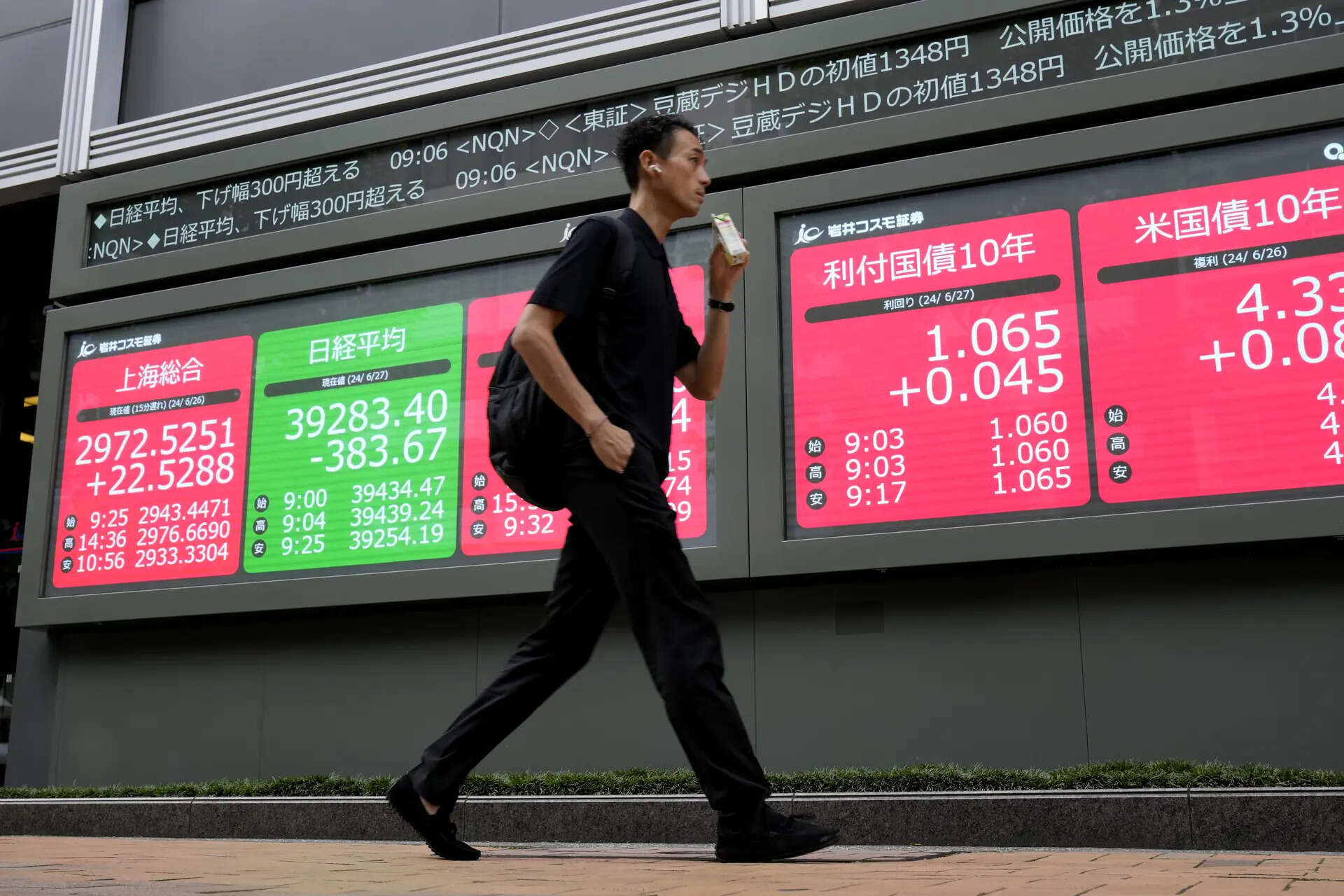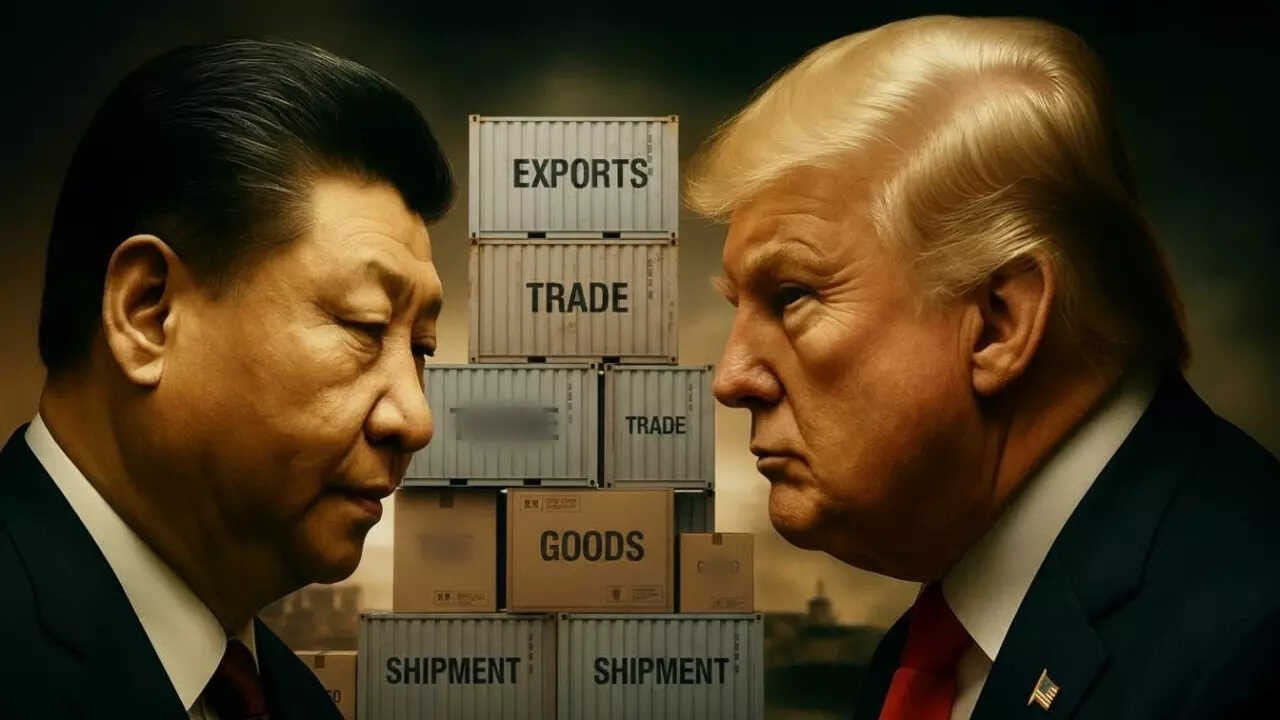Asian markets plunged as President Trump escalated trade tensions with China, threatening 100% tariffs on Chinese goods and potentially canceling a summit with Xi. These new tariffs, set for November 1, follow months of fragile peace and previous escalating levies, impacting global markets and driving gold to a new record.
Navigating Choppy Waters: Asian Markets React to Trade Turbulence
The mood across Asian markets this week felt less like a gentle breeze and more like a gathering storm. A palpable sense of unease rippled through trading floors as investors grappled with the implications of renewed trade tensions. It all started with a familiar refrain –– a threat of escalated tariffs, this time directed at China, resurrecting fears that had seemingly begun to recede.
Hong Kong’s Hang Seng index took a particularly sharp dive, plummeting over 9%. Shenzhen’s composite index wasn’t far behind, shedding over 340 points. The sea of red painted a clear picture: investors were scrambling to reassess their positions. What’s driving this sudden downturn, and what does it mean for the broader global economy?
The Tariff Threat: A Deja Vu Moment for Global Markets
The specter looming over Asian markets, of course, involves the potential re-ignition of trade wars. While details remain sketchy and much hinges on future negotiations, the mere mention of further tariffs on Chinese goods has sent shivers down the spines of investors who vividly remember the disruptive effects of similar moves in the past. Remember the supply chain disruptions? The price hikes on consumer goods? The general climate of uncertainty that stifled business investment? All of that is fresh in people’s minds.
The problem is that this isn’t just about two countries anymore. Asian economies are deeply interconnected, functioning as vital links in global supply chains. A trade war between the US and China inevitably has knock-on effects across the region, impacting everything from manufacturing output to currency valuations. Countries like South Korea, Taiwan, and Singapore, heavily reliant on exports, find themselves caught in the crossfire.

Beyond Tariffs: Other Factors at Play in Asian Markets
While the threat of increased tariffs acted as the primary catalyst for the market downturn, other factors were likely contributing to the overall bearish sentiment. Concerns about slowing economic growth in China, already simmering beneath the surface, have been amplified by the trade war rhetoric. China’s economic performance is, arguably, the biggest driver of regional prosperity. Any slowdown there inevitably impacts the entire region.
Moreover, rising interest rates in the United States and other developed economies are adding to the pressure. As interest rates climb, investors tend to gravitate towards safer assets, often pulling capital out of emerging markets like those in Asia. This outflow of capital can further depress stock prices and weaken currencies.
Strategies for Navigating the Volatility of Asian Stocks
So, what should investors do amidst this period of heightened volatility? Panicking and selling off assets is rarely the answer. Instead, a more considered and strategic approach is generally recommended. Here are a few things to keep in mind:
* Diversification is Key: Spreading your investments across different asset classes and geographic regions can help cushion the impact of market downturns. Don’t put all your eggs in one basket, as they say.
* Focus on Fundamentals: Look beyond the short-term market noise and focus on the underlying fundamentals of the companies you’re investing in. Are they profitable? Do they have a strong track record of growth?
* Stay Informed: Keep abreast of the latest developments in the trade war and other global economic events. Understanding the context can help you make more informed investment decisions. Regularly reviewing financial news and analysis is key to your success.
* Consider the Long-Term: Market fluctuations are a normal part of the investment cycle. Try to avoid making rash decisions based on short-term market movements. Focus on your long-term financial goals and stick to your investment strategy.
A Call for Calm Amidst the Chaos of Asian Stocks
The current volatility in Asian markets is undoubtedly unsettling, but it’s important to remember that markets are often driven by sentiment as much as by concrete economic data. The fear of escalating tariffs is real, but it’s also possible that cooler heads will prevail, and a negotiated solution will be found. For related insights, see [our previous article on global investment strategies](internal-link-to-related-article). Until then, a measured and informed approach is the best way to navigate these choppy waters and protect your investments. Ultimately, the key is to avoid knee-jerk reactions and stick to a well-thought-out investment plan. By doing so, investors can weather the storm and position themselves for long-term success.







